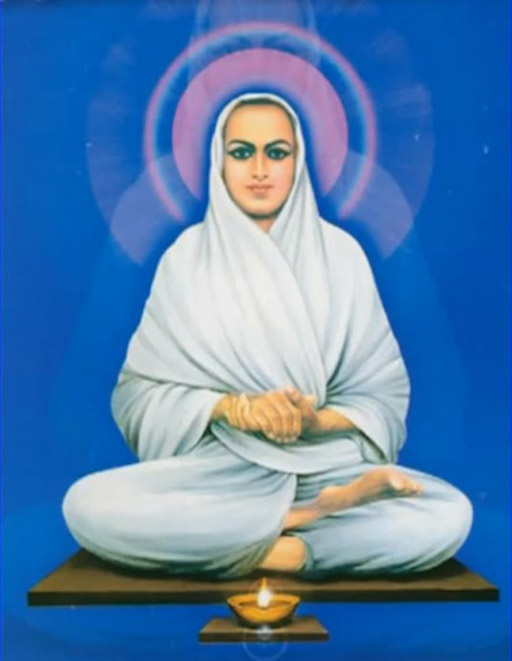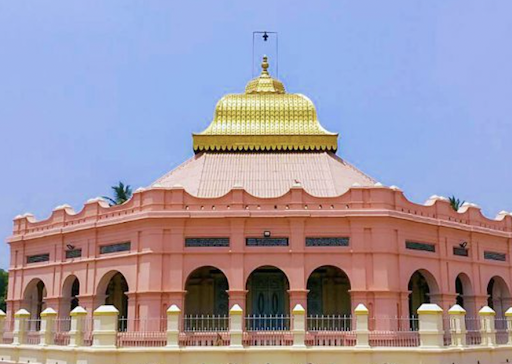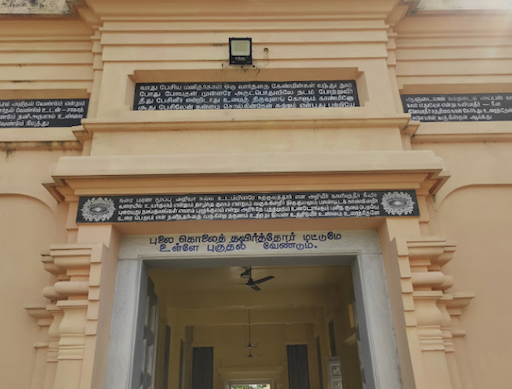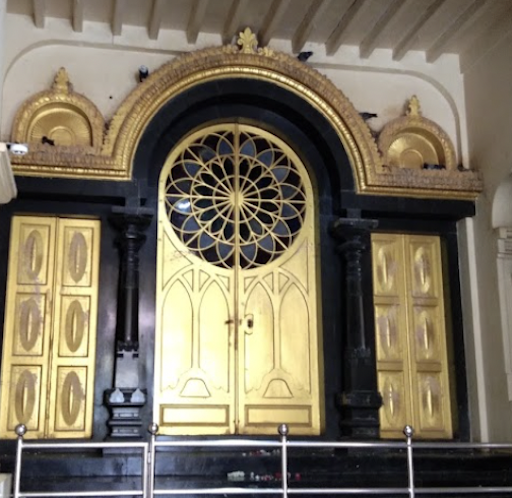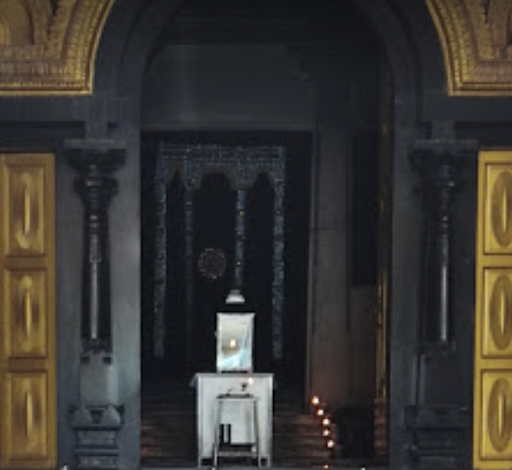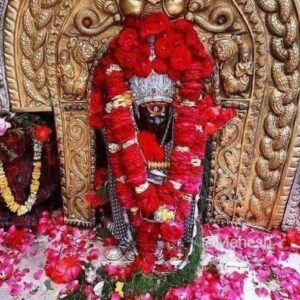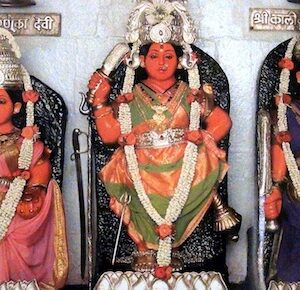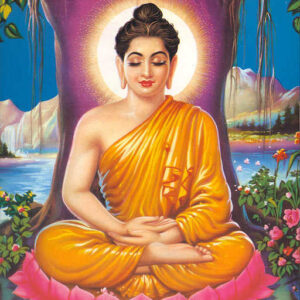This is a Jeevasamadhi of Vallalar (Swami Ramalingam) at Sathya Gnana Sabai, Vadalure. This is a place where Vallalar dematerialized and dissolved himself completely.
There is a place to sit and meditate. You can go into meditative states here effortlessly.
How to get there
It is located 31 kms North West of Chidambaram.
Map: https://goo.gl/maps/UtBvefQH5rTHc9Ps6
About Vallalar
Thiruvarutprakasa Vallalār Chidambaram Ramalingam (5 October 1823 – 30 January 1874), commonly known in India and across the world[1] as Vallalār, Ramalinga Swamigal and Ramalinga Adigal, was one of the most famous Tamil Saints and also one of the greatest Tamil poets of the 19th century[2] and belongs to a line of Tamil saints known as “gnana siddhars” (gnana means higher wisdom).
The Samarasa Suddha Sanmarga Sathiya Sangam[3] was spread and passed on by him not only in theory but mainly in practice by his own way of living which by itself is an inspiration for his followers. Through the notion of Suddha Sanmarga Sangam, the saint endeavored to eliminate the caste system.[4] According to Suddha Sanmarga, the prime aspects of human life should be love connected with charity and divine practice leading to achievement of pure knowledge.
Ramalinga advocated the concept of worshipping the flame of a lighted lamp as a symbol of the eternal power.[5]
Once, Rāmalingam’s parents went to the Chidambaram Natarājar Temple with their five month old child, and the infant was joyous while the priest was offering Deepa Aradhana (adoration by lighted lamp being brought close to the vigrahams); this was perceived by Rāmalingam as a deep spiritual experience. In later years he said of the experience: “No sooner the Light was perceived, happiness prevailed on me”, and “The sweet nectar was tasted by me as soon as the Arut perun jothi (Supreme Grace Of Light) became visible”.[6]
In 1824, his father Rāmayyā pillai died. Because of his untimely demise, Chinnammai shifted her residence to her mother’s place at Chinna kāvanam, Ponneri. Saint Rāmalingam was a small child when he relocated with his mother to Chennai in 1826. He and his mother lived with his eldest brother Sabhapati and his wife Pāppāthi at 31/14 Veerasamy Pillai Street at Sevenwells area of Chennai, which is in the area near Chennai Kandha kottam Kandha swāmi temple. After Rāmalingam reached five years of age, Sabhapati initiated his formal education. But the young child was not interested in that, instead he preferred trips to the nearby Kandha swāmi temple. Sabhapati thought that the child needed punishment as a form of discipline, and he told his wife not to give Rāmalingam his daily meal. His kind sister-in-law, however, secretly gave him food and persuaded him to study seriously at home. In return, Rāmalingam asked for his own room, lighted lamp and mirror. He placed the light in front of the mirror. He started meditation by concentrating on the light and thus began the young boy’s spiritual life. He miraculously saw a vision of the Lord Muruga. Rāmalingam said:
- “The beauty endowed divine faces six, the illustrious shoulders twelve.”[7]
At one time, Rāmalingam had to replace his elder brother Sabhapati at an Upanyāsam (religious stories) session as upāsakar. His great discourse on verses from the `Periya Purānam‘, an epic poem by Sekkizhar about the saintly ’63 Nāyanārs‘, was appreciated by the devotees as being given by a very learned scholar. Rāmalingam’s mental and spiritual growth progressed rapidly. Rāmalingam says thanks to the Divine by:
- “Effulgent flame of grace, that lit in me intelligence, to know untaught.”[8]
Rāmalingam evolved in his spiritual journey from being a devout devotee of Lord Shiva to worshiping the formless.
Rāmalingam renounced the world at the young age of thirteen but he was forced to marry his niece (on his sister’s side). Legends say that the bridegroom during his first night after marriage was reading devotional works like the Thiruvāsagam. He was not interested in money, and it is said that in later life he reduced or ignored eating and sleeping. But he seemed fit in body,[citation needed] which was believed to be due to his supposed “physical transformation”.
On 22 October 1873, Rāmalingam raised the flag of Brotherhood[clarification needed] on his one-room residence Siddhi Valāgam in Mettukuppam.[25] He gave his final and most popular lecture, about spiritual progress and, “nature of the powers that lie beyond us and move us,” and recommended meditation using the lighted lamp from his room, which he then kept outside.
On 30 January 1874, Rāmalingam entered the room, locked himself inside and told his followers not to open it. After opening, he said, he will not be found there. (He will be “United with Nature & ruling the actions of ‘all of the alls’,” as told in his poem called ‘Gnana Sariyai’). His seclusion spurred many rumors, and the Government finally forced the doors open in May. The room was empty, with no clues. In 1906, records about his disappearance[26] were published in the South Arcot District’s Madras District Gazetteers.
